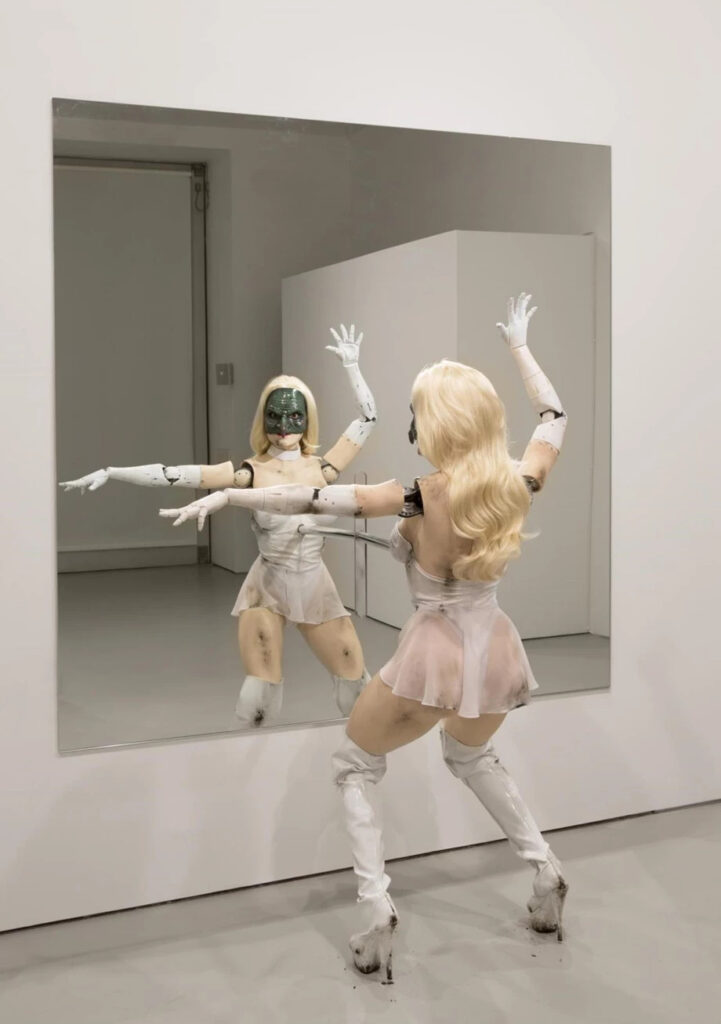The “uncanny valley” phenomenon named by Japanese roboticist Masahiro Mori in 1970, refers to the feeling of discomfort or eeriness that people have when they encounter beings that look almost human but are missing key human traits. This discomfort peaks when the resemblance is striking yet falls short of perfection, evoking a cognitive dissonance. The term “uncanny,” like “robot” and “uncanny valley,” is relatively new. Although it originated in the 16th century, it didn’t gain its current meaning until 1919 when Sigmund Freud wrote an essay on the subject. Freud explained the unsettling nature of things like dolls, puppets, and wax figures, noting that their mix of familiarity and strangeness made them eerie—the more familiar they seemed, the stranger they appeared. More than fifty years later, Mori expanded on Freud’s theories by applying them to robotics in his essay. Mori was inspired by his country’s rich theatrical heritage, suggesting that its renowned bunraku puppets were both incredibly lifelike but likable, although this might be partly because audiences experienced them from the comfort of their seats. The uncanny valley theory can be found in many artworks if looked closely, but some of them stand out much more for various reasons.

Art that blurs the boundary between human and non-human forces us to question our existential perceptions. In the realm of contemporary art, the uncanny valley often serves as a means to provoke introspection about who gets to be human. Contemporary artist Jordan Wolfson’s “Female Figure” is a life-size animatronic sculpture, combining film, installation, and performance. Dancing before a mirror, the robotic figure maintains eye contact with the viewers through facial recognition technology. In a disconcerting monotone, the animatronic figure recites lines in Wolfson’s voice: “My mother is dead. My father is dead. I’m gay. I’d like to be a poet. This is my house.”
Wolfson’s sculpture references popular culture, makes itself a part of humanity that is not made out of flesh and bones, but mechanics and wires. This combination of lifelike appearance and mechanical movements positions the piece in the uncanny valley. The figure’s unpredictable actions and piercing gaze evoke a sense of unease, reflecting the complex relationship of humanity with non-humans. The animatronic’s behavior disrupts our expectations of human interaction, reminding the uncanny nature of technology that mimics humanity without fully being able to replicate them.

Hyper-realism is a key for verisimilitude, and the blurred line between them is uncanny. Known for his large-sized, hyper-realistic sculptures, Ron Mueck plays with our emotions and expectations. Mueck’s monumentally scaled sculpture “In Bed” depicts a person in a vulnerable state of mind. The subject lying in a bed with her hand partially covering her mouth seems a bit worried, and ponderous. The viewers read her face, guess her story, even emphasizing the trouble the figure might be having, but can’t help themselves feeling threatened by her size, and human-like appearance. Sometimes, the human mind gets overprotective and recognizes every little detail that might hurt them. Here she is, a sculpture trying to fool people into thinking she is real, a human, and has feelings in the middle of an art gallery.

In the digital age, the uncanny valley finds new resonance in hyper-realistic computer-generated imagery (CGI) and artificial intelligence (AI). Artists use advanced technologies to replicate human likeness with unprecedented fidelity in films, video games, and digital artworks. Yet, despite technical capabilities, digital representations often fail to escape the uncanny valley. This phenomenon is non-linear, meaning it only becomes noticeable once an object surpasses a certain level of realism. Even though new technologies create hyper-realistic visuals in a couple seconds, the uncanny valley stands in the way of verisimilitude.








